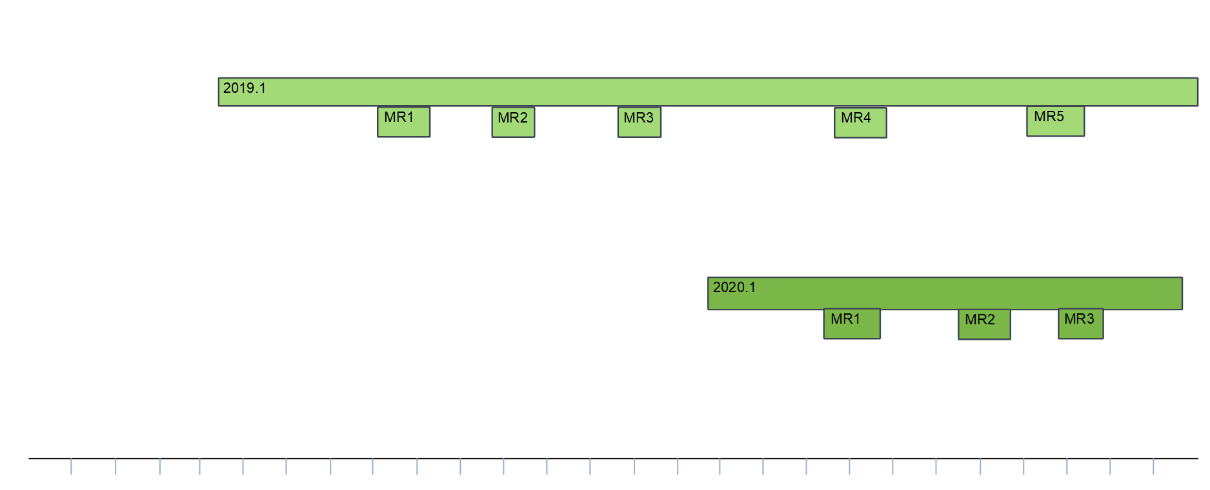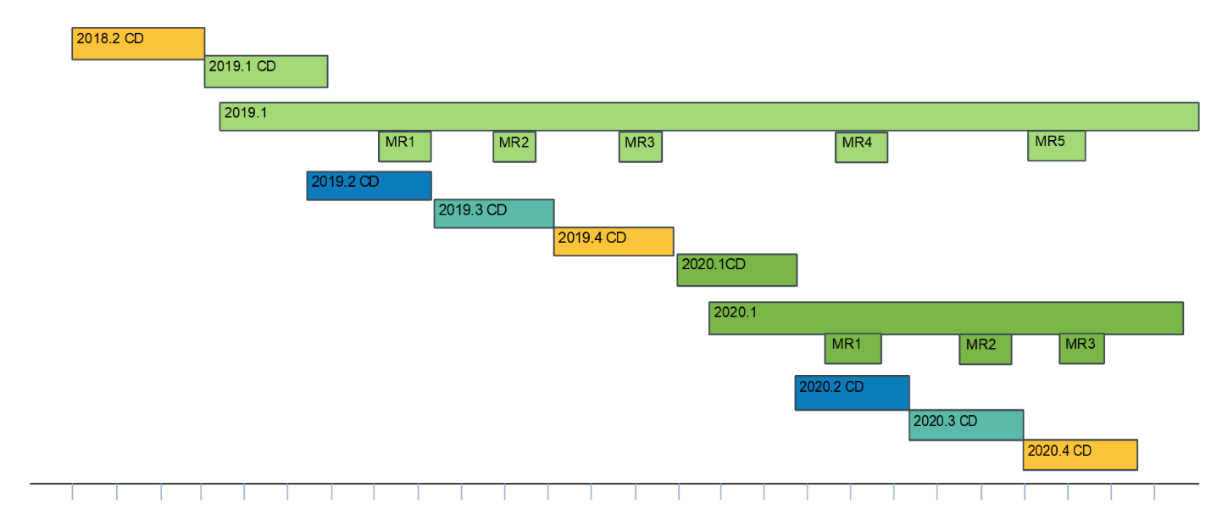
Note: there are more recent updates, see https://community.intersystems.com/post/updates-our-release-cadence
InterSystems is adopting a new approach to releasing InterSystems IRIS. This blog explains the new release model and what customers should expect to see. We laid this out at Global Summit at the end of the InterSystems IRIS roadmap session and have received a lot of positive feedback from customers.
With this new model we offer two release streams:
1) An annual traditional release that we call EM (for Extended Maintenance)
2) A quarterly release that is tagged CD (for Continuous Delivery) and will be available only in a container format.
Why change? Speed and predictability
The pace of change in our industry is increasing, and this model ensures that we can publish the latest features very quickly to be responsive and competitive in the market. Many customers have told us they want two things:
Our new release cadence, inspired by continuous delivery principles, is similar to two-stream models used at many major software companies and a substantial fraction of enterprise-ready open source projects. Those that have successfully adopted this approach resoundingly report that they have higher quality and lower-risk releases, as well as a faster response time.
What’s not changing? Traditional releases are the same
Traditional releases (the "EM" releases) work the same way that our customers are used to. They receive ongoing maintenance releases, are the basis for adhocs as needed, and are supported on all platforms. Full product installation kits are available through the WRC Software Distribution portal as usual. Field tests will be available for major releases as we have done in the past. Maintenance releases will be made available for EM releases using the same ground rules we’ve used traditionally.
The difference is that these are released once per year, at a predictable time. Version 2019.1 of InterSystems IRIS is scheduled for March of 2019, version 2020.1 is scheduled for March 2020, and so on, as shown in the diagram below.

New quarterly releases are container-only
Every three months, new features and functionality will be available via a new quarterly release stream, denoted with a “CD”. For example, InterSystems IRIS version 2018.2 CD is scheduled for November 2018, version 2019.1 CD is scheduled for February 2019, version 2019.2 CD is scheduled for May 2019 and so on, as shown in the following diagram.

There are restrictions on these CD releases:
CD releases are fully supported by InterSystems for development, test, and production. Along with each CD release, InterSystems will have a preview program and provide preview images ahead of the final release. Preview images are supported for development and test purposes, but not for production.
Although Containers are relatively new, they are now widely used and provide many benefits. Customers do not need to use the CD releases or adopt containers, but there are many resources available from InterSystems to help with using InterSystems IRIS in containers (including multiple online videos) as well as a large ecosystem around containers in the industry at large.
In addition to providing rapid delivery of new features, CD releases will help with the predictability and stability of the traditional (EM) releases. The first CD release of the year has a corresponding EM release (which is the same except for any platform-specific capabilities), and these include all the functionality of the previous CD release plus more. Developers can work with CD releases and be confident that their code will work with traditional releases as well. Even if you never touch a CD release, you can track what features are released with InterSystems IRIS each quarter and plan confidently.